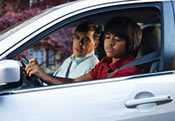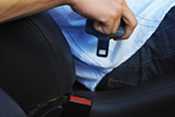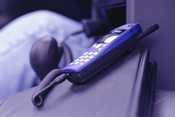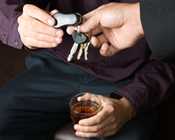Pediatricians and Safe Teen Driving

Pediatricians can be valuable partners in helping families address safe teen driving.
Car crashes took more than 2,300 young lives in 2015—that’s six teen deaths a day. Yet parents are too often unaware of the driving conditions that are most risky for teens.
Parents can play a key role in keeping their teens safe on the road.
Key Steps for Pediatricians
Pediatricians can be valuable partners in helping families address this important health topic. Here are some key steps you can take:
Educate to Reduce Risk
Educate parents and teens about the dangers of teen driving and steps they can take to reduce the risks. Parents and teens should discuss their family’s rules of the road and set consequences for breaking them.
Encourage Use of a Parent-Teen Driving Agreement
Encourage parents to reinforce these talks by working with their teen to complete a parent-teen driving agreement. Download free copies of the Parents Are the Key/AAP parent‐teen driving agreement that you can hand out.
Remind Parents To Lead by Example
Remind parents that they need to lead by example. They can’t wait until their teen is old enough to drive to start modeling good driving behaviors. If parents talk on the phone, text, speed, or drive without their seat belt, so might their teen.
Spread the Word
Spread the word about safe teen driving by distributing campaign materials in waiting and examination rooms. Free Parents Are the Key materials are available to download.
Include information about safe teen driving on your clinic’s website. Content syndication lets your web site visitors have direct access to Parents Are the Key information, without ever leaving your web site.
Reduce the Risks
As a pediatrician, you talk to your patients and their parents about important milestones and their health implications. One such milestone, learning how to drive and getting a driver’s license, comes with great responsibility and risk. Discuss the following key areas with your teen patients and their parents:
Driver Inexperience
 Most crashes happen during the first year a teen has a license. Encourage parents to provide at least 30 to 50 hours of supervised driving practice over at least six months. They should practice on a variety of roads, at different times of day, and in varied weather and traffic conditions.
Most crashes happen during the first year a teen has a license. Encourage parents to provide at least 30 to 50 hours of supervised driving practice over at least six months. They should practice on a variety of roads, at different times of day, and in varied weather and traffic conditions.
Teen Passengers
 Crash risk goes up when teens drive with other teens in the car. Parents should follow their state’s teen driving law for passenger restrictions. If your state doesn’t have such a rule, parents should limit the number of teen passengers to zero or one for at least the first six months.
Crash risk goes up when teens drive with other teens in the car. Parents should follow their state’s teen driving law for passenger restrictions. If your state doesn’t have such a rule, parents should limit the number of teen passengers to zero or one for at least the first six months.
Nighttime Driving
 For all ages, fatal crashes are more likely to occur at night; but the risk is higher for teens. Parents should make sure their teen is off the road by 9 or 10 p.m. for at least the first six months of licensed driving.
For all ages, fatal crashes are more likely to occur at night; but the risk is higher for teens. Parents should make sure their teen is off the road by 9 or 10 p.m. for at least the first six months of licensed driving.
Seat Belts
 The simplest way to prevent car crash deaths is to buckle up. Parents should require their teen to wear a seat belt on every trip. This simple step can reduce their teen’s risk of dying or being badly injured in a crash by about half. Additionally, encourage parents to set a good example and always buckle up when in the car.
The simplest way to prevent car crash deaths is to buckle up. Parents should require their teen to wear a seat belt on every trip. This simple step can reduce their teen’s risk of dying or being badly injured in a crash by about half. Additionally, encourage parents to set a good example and always buckle up when in the car.
Distracted Driving
 Distractions increase a teen’s risk of being in a crash. Encourage parents to prohibit cell phone use, texting, and other distracting behaviors while their teen is driving. Remind parents to set a good example by following the same rules in the car.
Distractions increase a teen’s risk of being in a crash. Encourage parents to prohibit cell phone use, texting, and other distracting behaviors while their teen is driving. Remind parents to set a good example by following the same rules in the car.
Drowsy Driving
 Young drivers are at high risk for drowsy driving, which causes thousands of crashes every year. Parents should ensure their teen is well rested before he or she gets behind the wheel.
Young drivers are at high risk for drowsy driving, which causes thousands of crashes every year. Parents should ensure their teen is well rested before he or she gets behind the wheel.
Reckless Driving
 Research shows that teens lack the experience, judgment, and maturity to assess risky situations. Parent should stress the importance of avoiding unsafe behaviors, such as speeding and tailgating.
Research shows that teens lack the experience, judgment, and maturity to assess risky situations. Parent should stress the importance of avoiding unsafe behaviors, such as speeding and tailgating.
Impaired Driving
 Even one drink will impair a teen’s driving ability and increase crash risk. Talk to teens about the risks of drinking and driving. Also, remind parents to be good role models-they should never drink and drive, and they should reinforce this message with their teen.
Even one drink will impair a teen’s driving ability and increase crash risk. Talk to teens about the risks of drinking and driving. Also, remind parents to be good role models-they should never drink and drive, and they should reinforce this message with their teen.
Type of Vehicle Driven
 Teens are more likely than older drivers to drive either smaller or older cars, especially when they own the car. While it may be tempting to choose a first car for a teen based on price or style, parents should consider a car’s safety features first and foremost.
Teens are more likely than older drivers to drive either smaller or older cars, especially when they own the car. While it may be tempting to choose a first car for a teen based on price or style, parents should consider a car’s safety features first and foremost.
Additional Resources
-
Los pediatras y la seguridad de los adolescentes al manejar
(Spanish version of Information for Pediatricians)
- Page last reviewed: May 3, 2017
- Page last updated: May 3, 2017
- Content source:
- Centers for Disease Control and Prevention,
- National Center for Injury Prevention and Control,
- Division of Unintentional Injury Prevention


 ShareCompartir
ShareCompartir